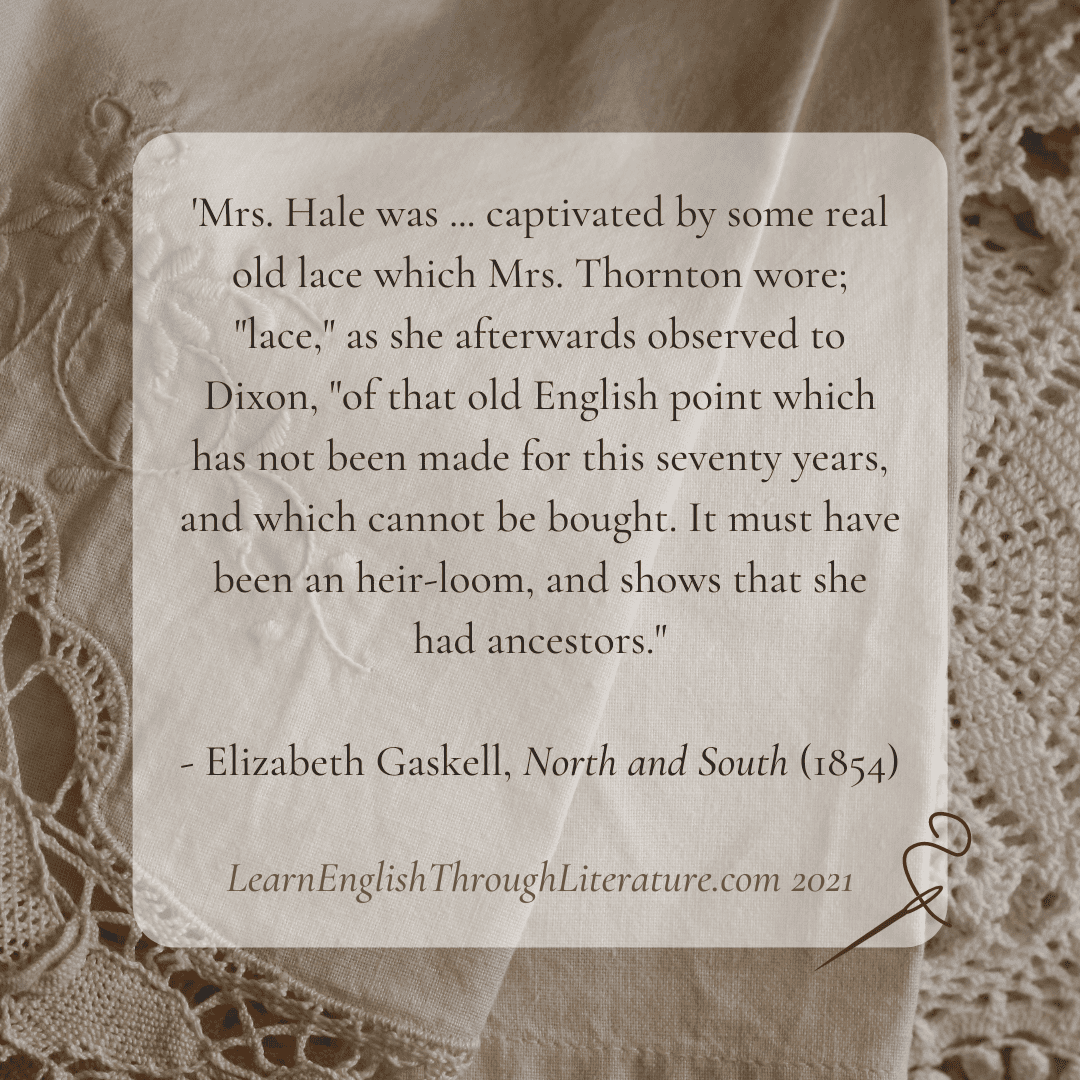In this second part of our Lesson on vocabulary relating to textiles, we will continue with four more words that specifically describe richer types of material. They are not the kind of fabric that you would wear every day, but there is a chance that at some point in your life you will wear a set of clothes that are made from one of them – so pay attention to the very end!
…
📝 #5 LACE
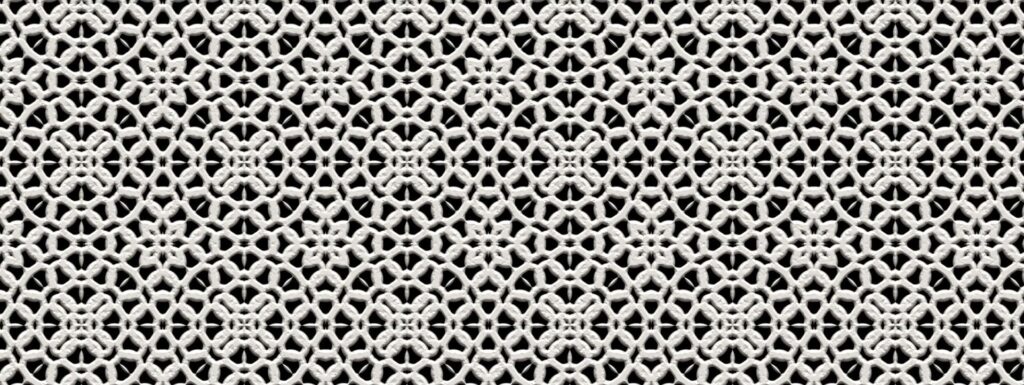
Lace: 1) This is a fine fabric made of cotton or silk, with tiny holes in patterns that have been made by looping, twisting, or knitting the thread according to a design. Because of its delicacy, it is often used as a trimming (a strip of special material used to decorate the edges of clothing) or as bridal material (for veils, etc).
2) Lace can also refer to the strings or ribbons to tie shoes with. 👉 [Note: in our Lesson today, we are only referring to ‘lace’ in the first sense, as a fabric].
Here we see how it is a kind of wedding or bridal material:
📙 ‘Margaret went up into the old nursery at the very top of the house, where Newton was busy getting up some laces which were required for the wedding.’
– Elizabeth Gaskell, North and South
Handmade lace was – and still is – expensive. When Catherine, Duchess of Cambridge (formerly Kate Middleton) married Prince William in 2011, her wedding dress was made of large swathes (broad strips) of handmade Carrickmacross lace from Ireland – and it all cost nearly a quarter of a million pounds sterling to make.
Part of the reason that lace has been so expensive historically is that it requires a lot of time and skill to make it. It also creates a strain on the eyes because most of the time the thread is very fine.
In the Victorian era, lace was often made by young, often poor girls because they still had healthy eyesight. They were usually paid well, but it was a kind of work that could only last a few years until the regular strain caused their sight to deteriorate (decay, become progressively worse). (I know the strain because I used to enjoy making little pieces of Carrickmacross lace until it hurt my eyes too much to continue!)
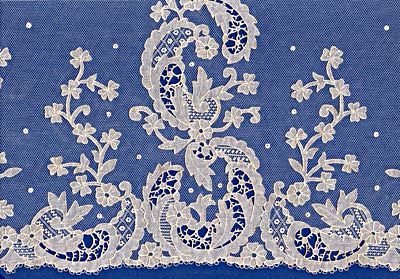
Image Credit: Socialambulator, Public domain, via Wikimedia Commons
Here is one of Margaret Hale’s friends talking about how she cannot see well enough to ‘mend laces’ (fix the tears in clothes with lace) ‘except just at the window’, in other words, very close to the window.
📙 “My eyes are not so good as they were, and the light here is so bad that I can’t see to mend laces except just at the window, where there’s always a shocking draught—enough to give one one’s death of cold.”
– Elizabeth Gaskell, North and South
Different geographical regions and historical eras have had different styles of lace.
Here is an example of lace that comes from another country – in this case, black lace from Spain that is sent to Margaret Hale in England as a gift from Dolores, her newly-married sister-in-law. 🎁
📙 ‘But the pretty, timid, girlish letters of Dolores were beginning to have a charm for both Margaret and her father. The young Spaniard was so evidently anxious to make a favourable impression upon her lover’s English relations, that her feminine care peeped out at every erasure; and the letters announcing the marriage, were accompanied by a splendid black lace mantilla, chosen by Dolores herself for her unseen sister-in-law, whom Frederick had represented as a paragon of beauty, wisdom and virtue.’
– Elizabeth Gaskell, North and South
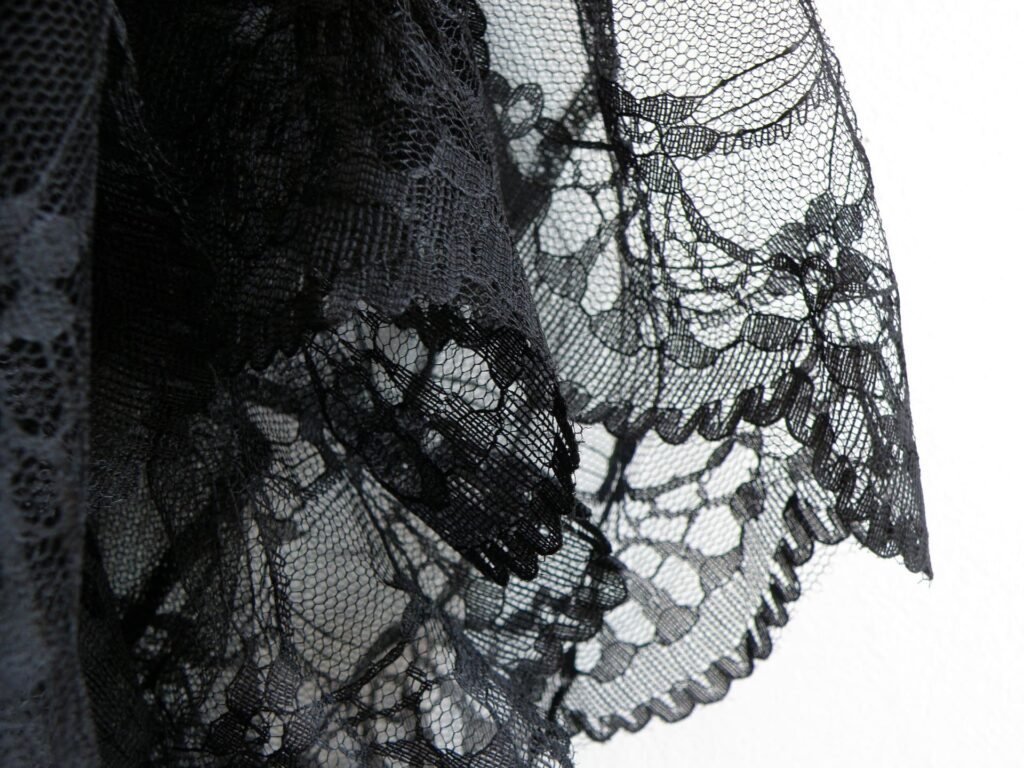
Image Credit: Markéta Marchová, from Pixabay
In this next passage, you can read how Mrs Hale (Margaret’s mother) is ‘captivated’ (fascinated, distracted by) the ancestral lace that Mrs Thornton wore (probably as a decorative collar around her neck). Mrs Hale thinks that such old lace must have been part of the family heritage and therefore Mrs Thornton must have had noble ancestors!
Because of this realisation, Mrs Hale makes an extra effort (‘exertion’) to start an interesting and polite conversation with Mrs Thornton.
📙 ‘Mrs. Hale was making rather more exertion in her answers, captivated by some real old lace which Mrs. Thornton wore; ‘lace,’ as she afterwards observed to Dixon, ‘of that old English point which has not been made for this seventy years, and which cannot be bought. It must have been an heir-loom, and shows that she had ancestors.’ So the owner of the ancestral lace became worthy of something more than the languid exertion to be agreeable to a visitor, by which Mrs. Hale’s efforts at conversation would have been otherwise bounded.’
– Elizabeth Gaskell, North and South
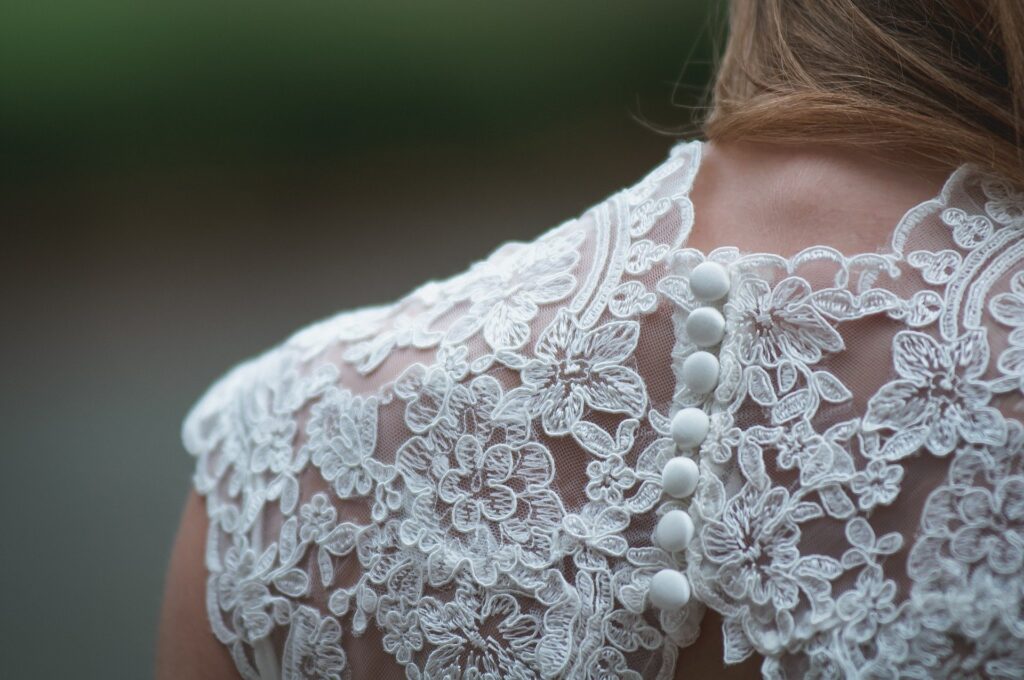
Image Credit: Free-Photos, from Pixabay
In fact, nearly every reference to Mrs Thornton in the novel includes a description of her laces and other expensive textiles:
📙 ‘[Mrs Thornton’s] window-curtains were lace; each chair and sofa had its own particular veil of netting, or knitting.’
– Elizabeth Gaskell, North and South
📙 ‘At last Mrs. Thornton came in, rustling in handsome black silk, as was her wont; her muslins and laces rivalling, not excelling, the pure whiteness of the muslins and netting of the room.’
– Elizabeth Gaskell, North and South
In this next quotation, Margaret is describing to her father how much rich people liked to show off their wealth. They do this, she says, by discreetly (delicately, quietly, politely) listing all the expensive things they own – a long list of ‘nouns that were signs of things which gave evidence of wealth’. 💷
Check the list to see if you would associate any of them with wealth nowadays!
📙 “… [The] ladies were so dull, papa—oh, so dull! Yet I think it was clever too. It reminded me of our old game of having each so many nouns to introduce into a sentence.”
“What do you mean, child?” asked Mr. Hale.
“Why, they took nouns that were signs of things which gave evidence of wealth,—housekeepers, under-gardeners, extent of glass, valuable lace, diamonds, and all such things; and each one formed her speech so as to bring them all in, in the prettiest accidental manner possible.”
– Elizabeth Gaskell, North and South
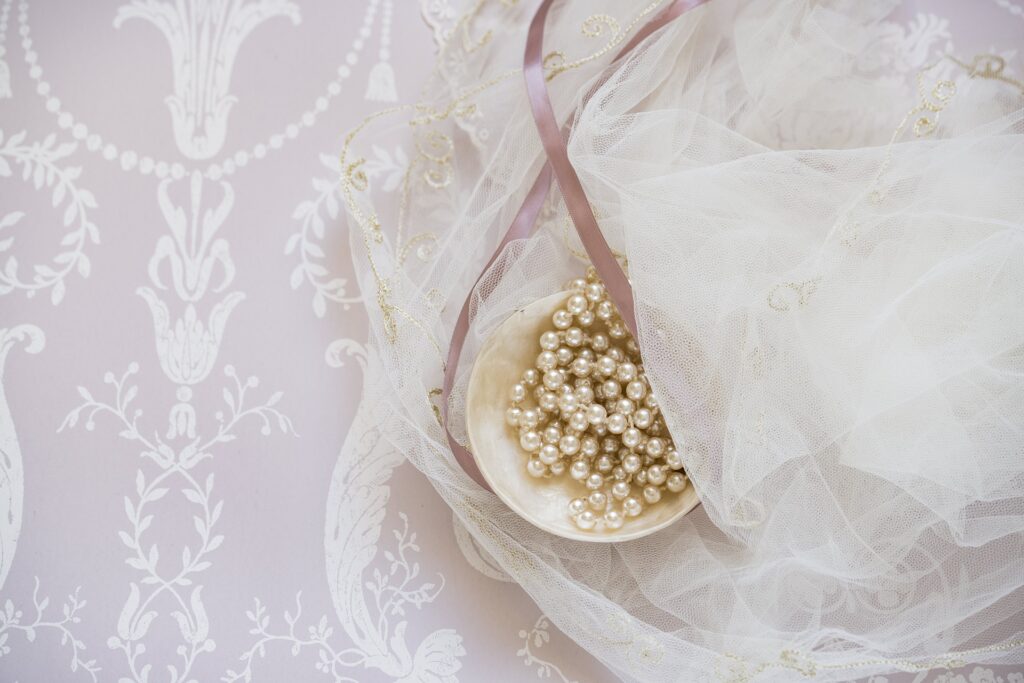
…
📝#6 SILK
This is a very sleek (smooth and glossy), fine, soft, and strong fibre that is produced by special insects know as silkworms. Their cocoons are used to make the silk thread and silk fabric that has always been highly valued as an expensive textile (a type of cloth or woven fabric).
Notice how the references to silk in North and South that I have listed below all describe an expensive type of clothing. The poor could never afford silk, and so it was a symbol of class and affluence (wealth) to be able to dress yourself in silk.

Image Credit: Timothy Green, from Pixabay
📙 ‘No one thought about it; but Margaret’s tall, finely made figure, in the black silk dress which she was wearing as mourning for some distant relative of her father’s, set off the long beautiful folds of the gorgeous shawls that would have half-smothered Edith.’
– Elizabeth Gaskell, North and South
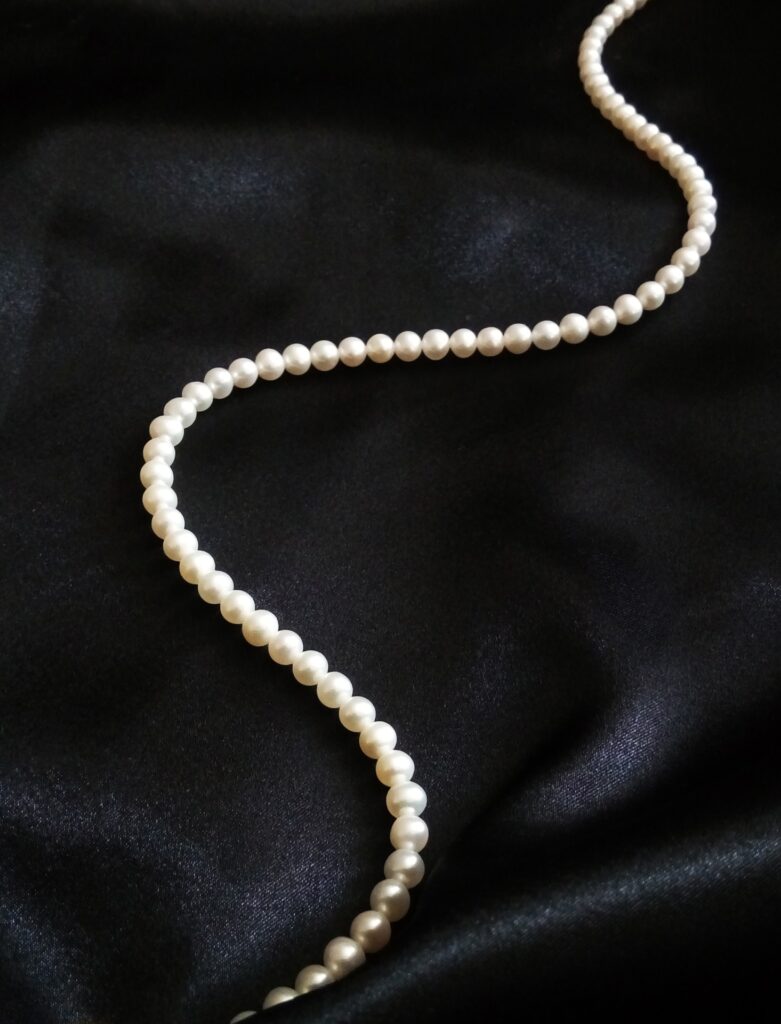
Image Credit: Hanna Kovalchuk
📙 ‘Mrs. Hale took off her black silk apron, and smoothed her face. She looked a very pretty lady-like woman …’
– Elizabeth Gaskell, North and South

Image Credit: Georgiana Romanovna
In this next quotation, Mrs Hale is complaining about how her beautiful lilac gown (dress) was ruined – probably by contact with wax – when she once went to visit a candle factory:
📙 “I remember once going in a lilac silk to see candles made, and my gown was utterly ruined.”
– Elizabeth Gaskell, North and South
This was as close to a lilac [a light shade of purple] silk as I could find:
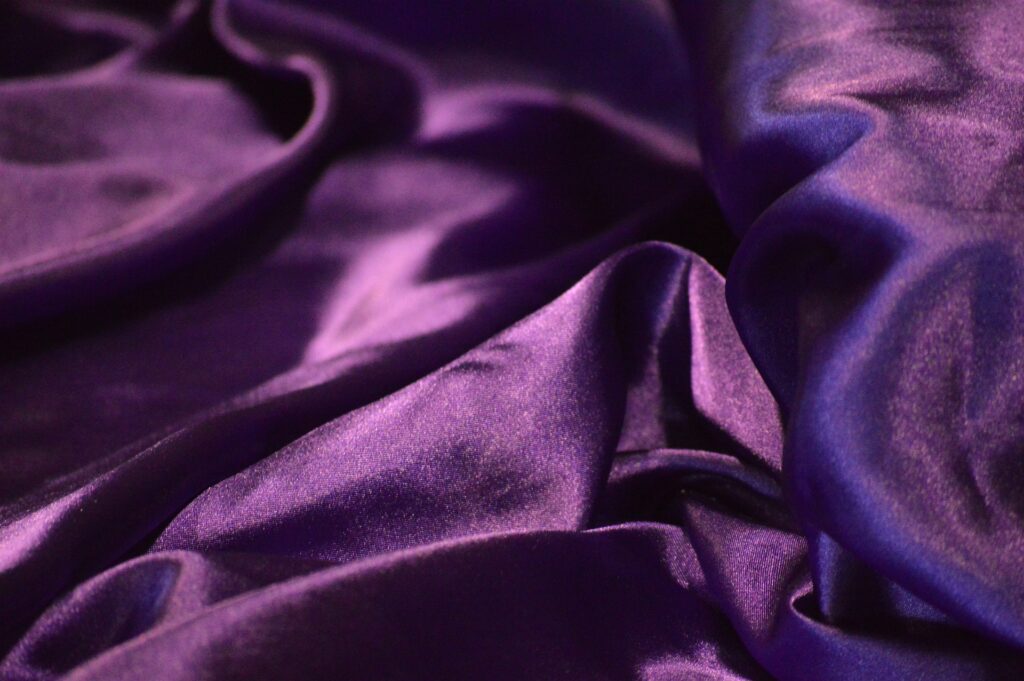
Image Credit: Ctvgs, from Pixabay
Gaskell also mentioned silk when she described Mrs Thornton’s expensive clothing:
📙 ‘At last Mrs. Thornton came in, rustling in handsome black silk, as was her wont; her muslins and laces rivalling, not excelling, the pure whiteness of the muslins and netting of the room.’
– Elizabeth Gaskell, North and South
Here is a description of Margaret getting dressed in a white silk dress for a special party and dinner. She enjoys playing around with it – spinning about so that its skirt expands like a great white cheese – and approaching her mother ceremoniously as if her mother ‘were the queen’!
📙 ‘So off Margaret went. She was very much inclined to play some pranks when she was dressed up at such an unusual hour; to make her rich white silk balloon out into a cheese, to retreat backwards from her mother as if she were the queen; but when she found that these freaks of hers were regarded as interruptions to the serious business, and as such annoyed her mother, she became grave and sedate. What had possessed the world (her world) to fidget so about her dress, she could not understand …’
– Elizabeth Gaskell, North and South

Image Credit: Masintos, from Pixabay
Silk was a fabric that was also used for funerals and mourning, as this next line shows:
📙 ‘If he thought about her and her silks and satins at all, it was to compare her and them with the pale sorrow he had left behind him, sitting motionless, with bent head and folded hands, in a room where the stillness was so great that you might almost fancy the rush in your straining ears was occasioned by the spirits of the dead, yet hovering round their beloved.’
– Elizabeth Gaskell, North and South
…
📝#7 SATIN
Satin is quite similar to silk and is sometimes confused with it. However, while silk is made from a natural fibre, satin is not always natural and can be created from many other materials.
Generally speaking, silk is more expensive and also stronger; it will be glossy on both sides of the fabric (front and back). On the other hand, satin is usually even glossier than silk but only one side; it is also less strong than silk, but also less expensive.
All this said, satin was still too expensive for the poor to buy their own clothes made with this material. Once again, you will notice here how all references to satin gowns (dresses) or other kinds of clothes were always worn by middle-class or wealthy individuals.
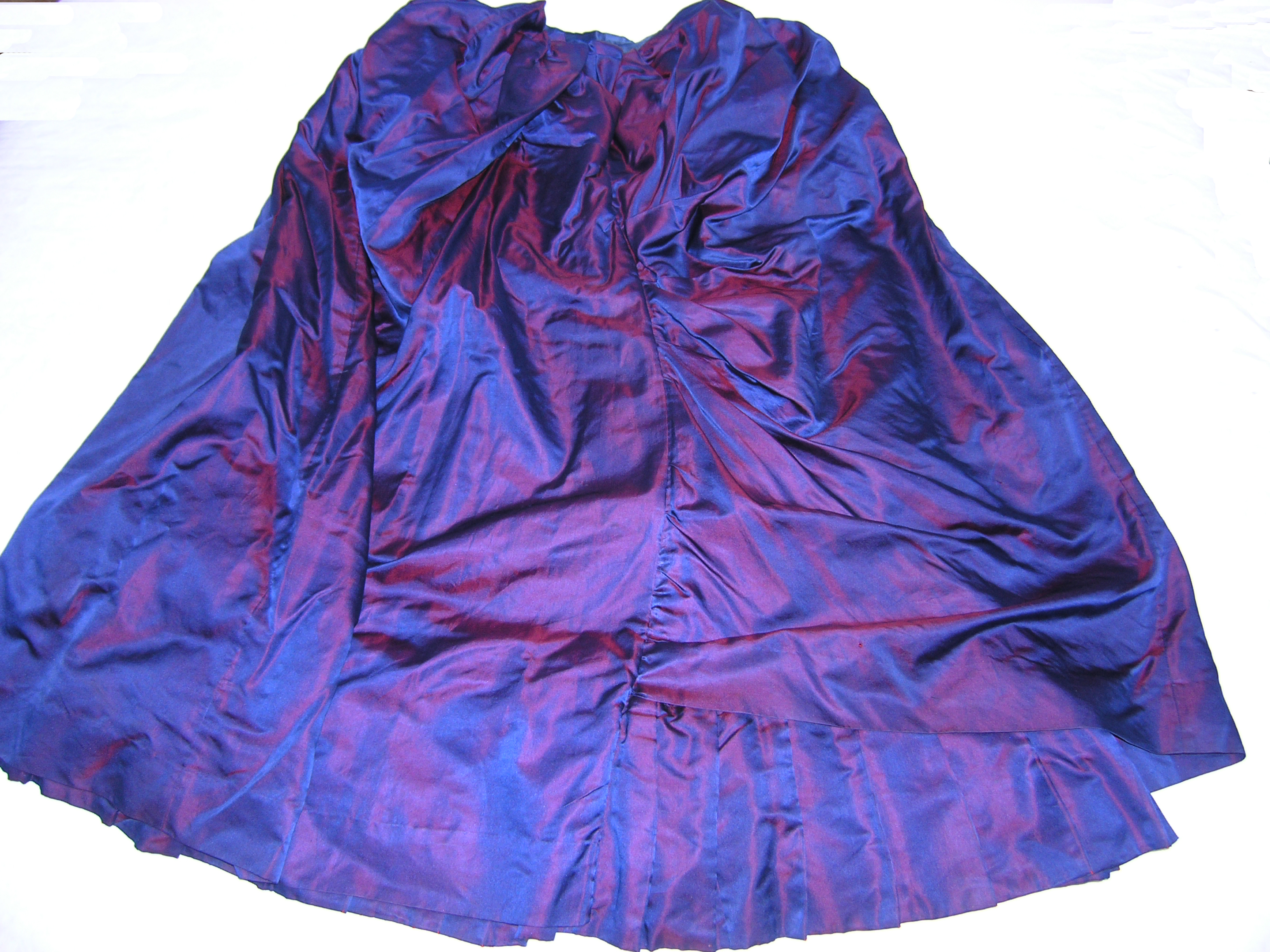
Image Credit: Auckland Museum, CC BY 4.0, via Wikimedia Commons
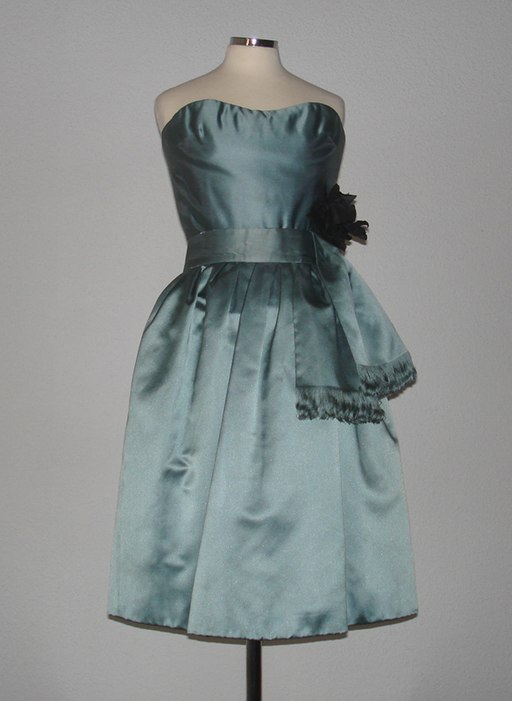
Image Credit: Peloponnesian Folklore Foundation, CC BY-SA 4.0, via Wikimedia Commons
📙 ‘Her mother had been detained at home by a multitude of half-reasons, none of which anybody fully understood, except Mr. Hale, who was perfectly aware that all his arguments in favour of a grey satin gown, which was midway between oldness and newness, had proved unavailing; and that, as he had not the money to equip his wife afresh, from top to toe, she would not show herself at her only sister’s only child’s wedding.’
– Elizabeth Gaskell, North and South

Image Credit: Jwrusa & Kjoonlee, Public domain, via Wikimedia Commons
And again, satins are often used in funerals (a very similar fabric – taffeta – is used to line the inside of a casket).
📙 ‘If he thought about her and her silks and satins at all, it was to compare her and them with the pale sorrow he had left behind him, sitting motionless, with bent head and folded hands, in a room where the stillness was so great that you might almost fancy the rush in your straining ears was occasioned by the spirits of the dead, yet hovering round their beloved.’
– Elizabeth Gaskell, North and South
…
📝 #8 VELVET

Image Credit: Olga Oginskaya, from Pixabay

Image Credit: Julia S, from Pixabay
Velvet is a very distinctive type of fabric. It is described as a woven tufted (having a bunch of threads that are held together at the base) fabric with a soft dense surface (also known as a pile). It is the kind of fabric that at a glance or a quick touch you can immediately tell what it is. In fact, velvet fabric has such a strong identity that we often use it as an adjective to describe very soft, slightly furry things: e.g., ‘the baby’s skin was as soft as velvet’ or ‘the velvety taste of the yogurt’.
In fact, this is how Elizabeth Gaskell used it in the novel – not to describe the fabric itself but something that reminded her of the fabric’s unique softness:
📙 ‘Then sometimes the turf is as soft and fine as velvet; and sometimes quite lush with the perpetual moisture of a little, hidden, tinkling brook near at hand.’
– Elizabeth Gaskell, North and South

Giant Magnolias on a Blue Velvet Cloth
National Gallery of Art, CC0, via Wikimedia Commons
And here our Lesson draws to its close! I trust that Gaskell’s North and South will more sense to you now that it is clear how the different textiles indicate (show, are symbols of) different social standings. That said, most of these words are common in English and will reappear in different contexts, so today’s lists and explanations should help you to better understand any textile-related words you may come across. Happy reading! 📚
P.S. If you would like to read a little bit more of Gaskell’s North and South, check out 👉 Lesson #210 from earlier this year in which I provide you with a reading comprehension exercise and a full vocabulary list.

